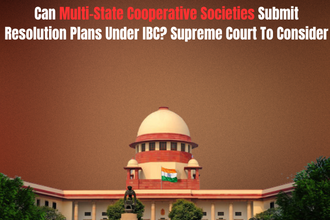In a bold and environmentally conscious ruling, the Supreme Court of India has ordered a complete halt to tree felling in Kancha Gachibowli, Hyderabad, while expressing strong disapproval over the unauthorized deforestation of what has been described as an eco-sensitive green zone. The Court emphasized its commitment to environmental protection, declaring that “not a single tree should be felled” in the contested 400-acre land.
This development has rekindled the debate around urban development vs. environmental conservation, and the Supreme Court’s intervention offers a significant precedent in favor of sustainable growth and forest preservation in rapidly urbanizing areas.
Case Background: Trees vs. IT Infrastructure
The dispute revolves around a 400-acre stretch of land in Kancha Gachibowli, a rapidly growing tech corridor in Hyderabad, Telangana. The land is being considered for auction by the Telangana Industrial Infrastructure Corporation (TGIIC) to promote IT infrastructure development. However, environmental activists, local communities, and students — especially from the nearby University of Hyderabad — have opposed the move, claiming the land constitutes forest area and functions as a crucial green lung for the city.
Clashes reportedly broke out between protesters and the police as bulldozers attempted to raze large portions of the land, prompting judicial intervention.
Supreme Court Takes Suo Motu Cognizance
On April 3, 2025, the Supreme Court took suo motu cognizance of the issue, staying further felling of trees and calling for detailed reports on the land’s legal status and environmental impact. The Court directed the Central Empowered Committee (CEC) to inspect the site and submit a report by April 16, 2025.
When the matter came up for hearing again, a Bench led by Justice BR Gavai and Justice Augustine George Masih made it clear that the Court’s primary concern was the destruction of forest cover and the illegality of tree-felling without State permission.
Key Observations from the Supreme Court
- “Not a single tree should be felled.”
The Bench categorically directed a blanket status quo, prohibiting any further removal of trees on the site. - “We will go out of the way to protect the environment.”
The Court emphasized the importance of urban green spaces, likening the area to Mumbai’s Sanjay Gandhi National Park, and said it was considering widening the green cover in the region. - Wildlife Protection Ordered
Noting the environmental damage, the Court directed the State Wildlife Warden to examine and take immediate steps to protect wildlife affected by deforestation in the 100-acre section of the land.
The Issue of Mortgage and Development Pressure
Senior Advocate K Parameshwar, appearing as amicus curiae, revealed that the entire land parcel had been mortgaged to a private entity to secure non-convertible bonds, with the knowledge of the Chief Secretary.
However, the Bench swiftly clarified that the Court was not concerned with financial or mortgage issues, but solely with the unlawful destruction of forest land and the violation of environmental safeguards.
“We are not on mortgage and all. We are only on how so many trees were chopped off without the permission of the State government.”
Telangana Government’s Response and Extension
Appearing for the State, Senior Counsel Dr. Abhishek Manu Singhvi assured the Court of full cooperation and requested time to respond to the CEC report, which he described as voluminous.
The Court granted four weeks’ time for the Telangana Government to submit its response and reaffirmed that status quo must be maintained in the meantime.
Legal and Environmental Significance of the Ruling
This ruling by the Apex Court marks a landmark moment in the ongoing battle between urban development and ecological preservation in India. Here’s why this order stands out:
1. Environmental Protection as a Judicial Priority
The Supreme Court has made it clear that environmental issues are non-negotiable, even when they conflict with large-scale development plans. This is consistent with the “polluter pays” and “precautionary” principles under Indian environmental law.
2. Preservation of Urban Green Spaces
With rapid urbanization and increasing pollution in Indian cities, urban forests and green lungs are crucial for sustainable living. The Court’s remarks echo the need to prioritize green zones over commercial infrastructure.
3. Suo Motu Action for Ecological Justice
The fact that the Supreme Court took suo motu cognizance underscores the judiciary’s role as a guardian of environmental rights, especially when executive inaction or violations occur.
4. Public Participation and Student Activism
The visible participation of students and local residents helped bring this issue to the national spotlight. This aligns with Article 51A(g) of the Constitution, which places a duty on citizens to protect and improve the natural environment.
5. Call for Reform in State Processes
By questioning whether permission was ever obtained for tree felling, the Court highlights gaps in compliance with forest clearance norms, possibly pushing States to strengthen their regulatory frameworks.
What Lies Ahead?
The Telangana government now has four weeks to respond to the CEC’s findings. Until then, no further tree felling or construction activity is allowed in the Kancha Gachibowli area. The case will likely shape the judicial approach to urban deforestation and could become a benchmark ruling on protecting eco-sensitive zones in metro cities.
Conclusion
The Supreme Court’s intervention in the Kancha Gachibowli tree felling case is a powerful affirmation of India’s commitment to environmental sustainability and judicial activism in ecological matters. As cities continue to expand, the ruling sends a strong message: development cannot come at the cost of environmental destruction.
The green lungs of Hyderabad may have just received a new lease on life — thanks to judicial vigilance and active citizen participation. The outcome of this case could redefine the balance between progress and preservation in India’s urban planning framework.



